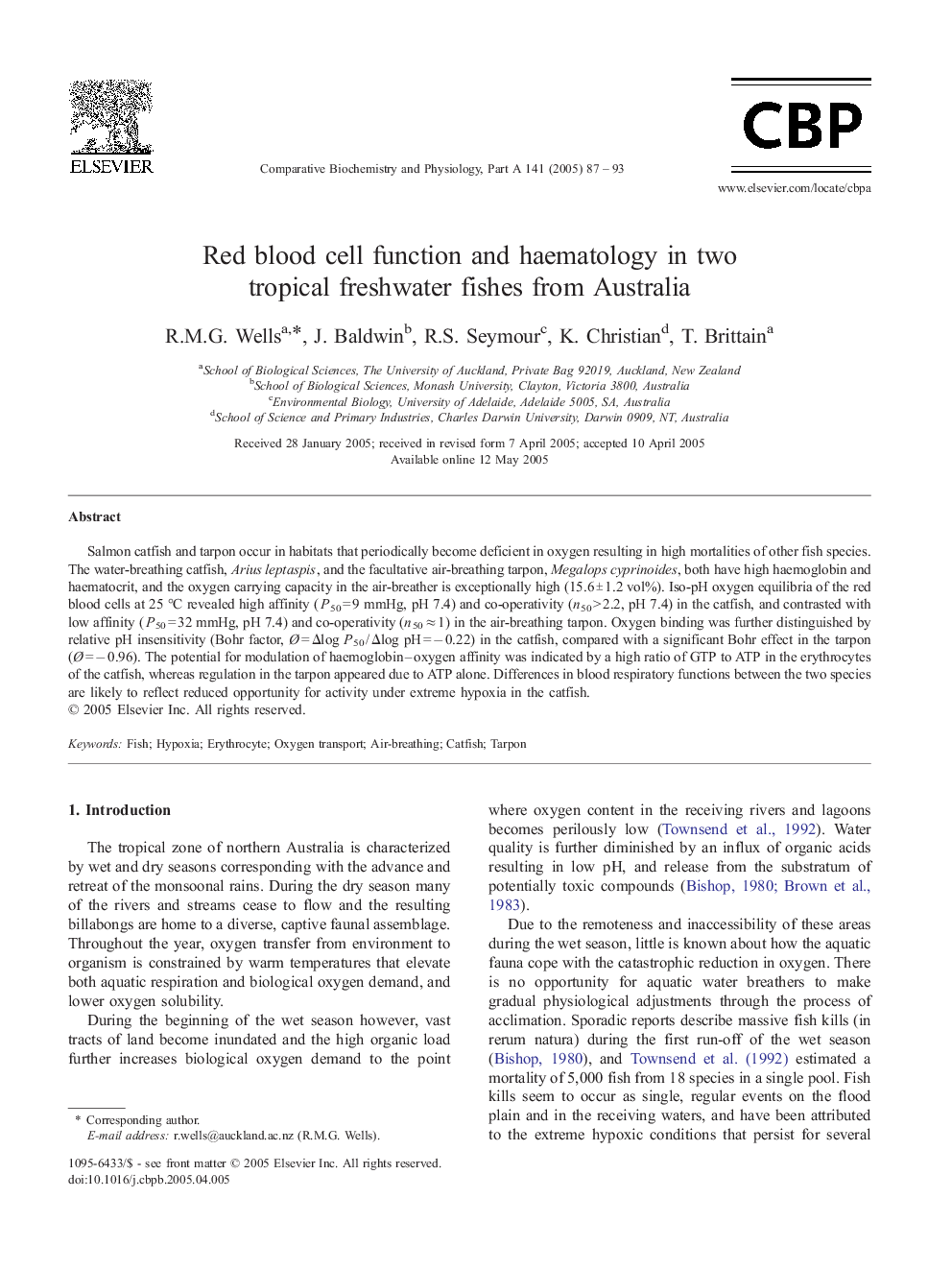| Article ID | Journal | Published Year | Pages | File Type |
|---|---|---|---|---|
| 10819119 | Comparative Biochemistry and Physiology Part A: Molecular & Integrative Physiology | 2005 | 7 Pages |
Abstract
Salmon catfish and tarpon occur in habitats that periodically become deficient in oxygen resulting in high mortalities of other fish species. The water-breathing catfish, Arius leptaspis, and the facultative air-breathing tarpon, Megalops cyprinoides, both have high haemoglobin and haematocrit, and the oxygen carrying capacity in the air-breather is exceptionally high (15.6 ± 1.2 vol%). Iso-pH oxygen equilibria of the red blood cells at 25 °C revealed high affinity (P50 = 9 mmHg, pH 7.4) and co-operativity (n50 > 2.2, pH 7.4) in the catfish, and contrasted with low affinity (P50 = 32 mmHg, pH 7.4) and co-operativity (n50 â 1) in the air-breathing tarpon. Oxygen binding was further distinguished by relative pH insensitivity (Bohr factor, à= Îlog P50 / Îlog pH = â 0.22) in the catfish, compared with a significant Bohr effect in the tarpon (à= â 0.96). The potential for modulation of haemoglobin-oxygen affinity was indicated by a high ratio of GTP to ATP in the erythrocytes of the catfish, whereas regulation in the tarpon appeared due to ATP alone. Differences in blood respiratory functions between the two species are likely to reflect reduced opportunity for activity under extreme hypoxia in the catfish.
Related Topics
Life Sciences
Biochemistry, Genetics and Molecular Biology
Biochemistry
Authors
R.M.G. Wells, J. Baldwin, R.S. Seymour, K. Christian, T. Brittain,
